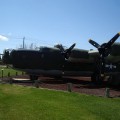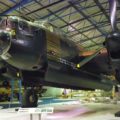
Myasishchev M-4 Bison | |
|---|---|
| Land | Sovjetunionen |
| Type | Strategisk bombefly |
| Første flytur | 20 January 1953 |
| Bygget | 91+2 |
Bildegalleri av en M-4 Bison, The Myasishchev M-4 Molot (Russian: Молот (Hammer), USAF/DoD reporting name “Type 37”, NATO reporting name Bison) is a four-engined strategic bomber designed by Vladimir Myasishchev and manufactured by the Soviet Union in the 1950s to provide a Long Range Aviation bomber capable of attacking targets in North America. The Myasishchev design bureau was formed to build such a bomber.
Kilde: M-4 Bison på Wiki
| Myasishchev M-4 Bison | |
|---|---|
| Fotograf | Unknow |
| Lokalisering | Boris Vasiljev |
| Bilder | 13 |
| M-4 Bison Gå Rundt | |
|---|---|
| Fotograf | Sergej Tsvetkov |
| Lokalisering | Dyagilevo airbase, Ryazan, Russia |
| Bilder | 19 |
Relaterte sett:
| Myasischev M-4 Walk Around | |
|---|---|
| Fotograf | Unknow |
| Lokalisering | Evgenii Malinovskii |
| Bilder | 31 |
Finn sett på eBay:
The Myasishchev M-4 Bison was a Soviet strategic bomber aircraft designed by Vladimir Myasishchev in the 1950s. It was the first Soviet bomber capable of delivering nuclear weapons to targets in the continental United States. The M-4 had a swept-wing design with four turbojet engines mounted on pylons under the wings. It had a crew of eight and could carry up to 24,000 kg of bombs or missiles.
The M-4 entered service in 1956 and was initially deployed in bomber regiments along the Soviet borders. However, it soon became apparent that the M-4 had limited range and payload compared to its American counterparts, such as the B-52 Stratofortress. The M-4 was also vulnerable to interception by fighter jets and surface-to-air missiles. As a result, the M-4 was gradually replaced by more advanced bombers, such as the Tupolev Tu-95 Bear and the Tupolev Tu-16 Badger. The M-4 was retired from service in 1994 and only a few examples remain in museums today.

Views : 1922









